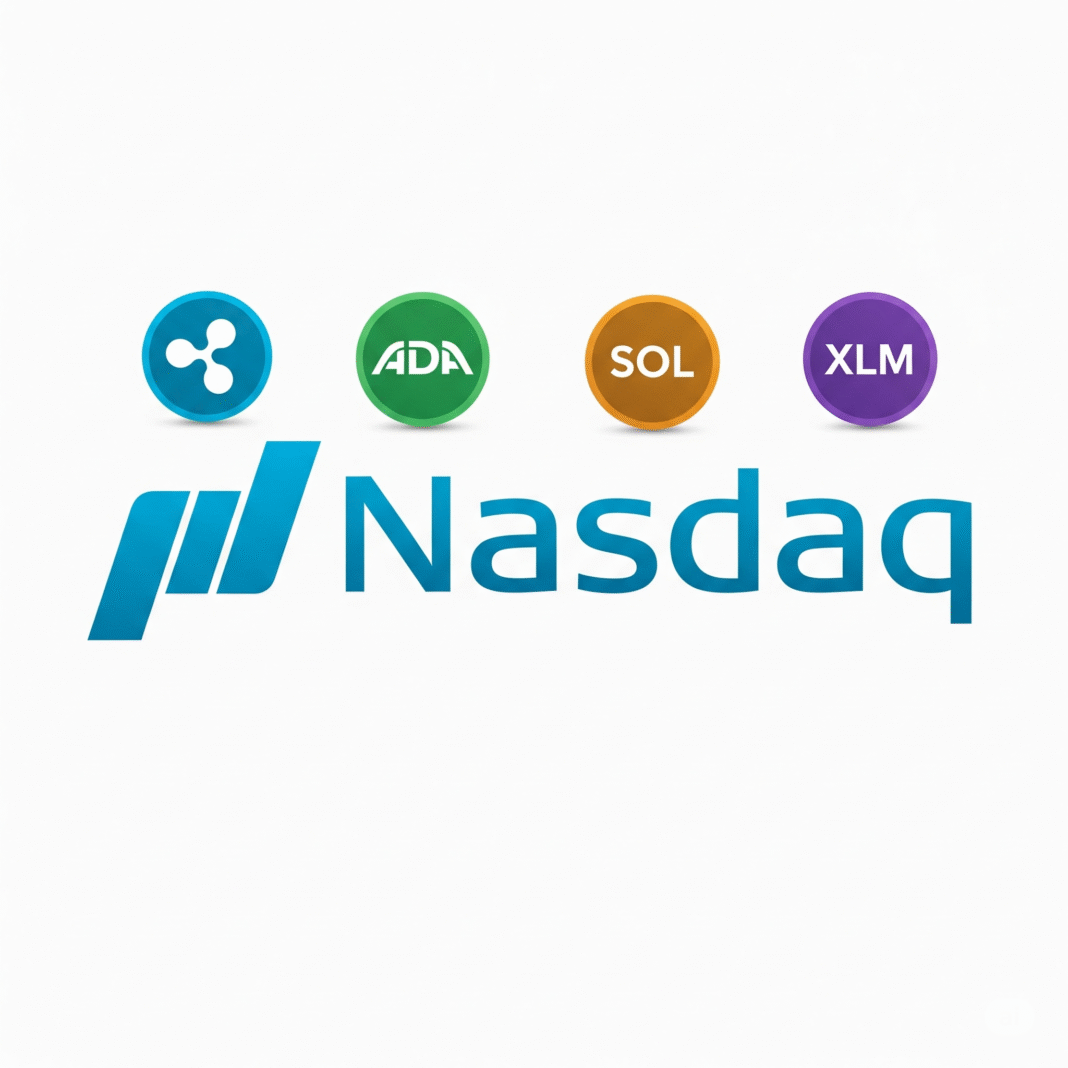In a move signaling broader institutional recognition of altcoins, Nasdaq has officially filed a Form 8-K with the U.S. Securities and Exchange Commission (SEC), confirming that four new digital assets — Cardano (ADA), Solana (SOL), Stellar Lumens (XLM), and XRP — have been added to its Nasdaq Crypto US Settlement Price Index (NCIUS).
This index serves as the benchmark for the Hashdex Nasdaq Crypto Index US ETF, a product designed to track the performance of top digital assets for institutional investors.
What Changed?
As of June 2, 2025, the NCIUS Index has been reconstituted to include ADA, SOL, XLM, and XRP. However, the ETF will continue to hold only Bitcoin (BTC) and Ethereum (ETH) for now due to current regulatory constraints.
Inside the SEC Filing: What the 8-K Reveals
The Form 8-K not only outlined the index reconstitution but also included the resignation of a key executive, which may signal strategic restructuring at the management level.
But the headline event was the index update, which, while significant, comes with a major caveat:
“Notwithstanding the changes to the NCI US, the Trust will continue to hold only BTC and ETH… due to the limitations of the Trust’s currently approved listing rule,” the filing states.
This has led to an important warning for investors: tracking errors may arise due to the mismatch between the ETF’s holdings and its broader benchmark.
Tracking Error Alert: What Investors Should Know
The ETF’s performance may diverge from the new index, particularly as the Trust remains restricted to BTC and ETH holdings.
“Beginning on June 2, 2025, the Index introduced additional Index Constituents… As a result, the Trust’s performance may be materially different from the performance of the Index.”
This highlights a growing concern in the ETF space: regulatory inertia is causing disconnects between fund benchmarks and actual holdings — a risk both retail and institutional investors must monitor.
What’s Next? Nasdaq Proposes Rule Change to Expand ETF Holdings
Nasdaq is not stopping here. It has filed a proposed rule change (SR-NASDAQ-2025-009) that could allow the ETF to align more closely with the full Nasdaq Crypto Index™ (NCI), which currently tracks nine digital assets, including:
- Bitcoin (BTC)
- Ethereum (ETH)
- Cardano (ADA)
- Solana (SOL)
- XRP
- Stellar Lumens (XLM)
- Chainlink (LINK)
- Litecoin (LTC)
- Uniswap (UNI)
A decision on this proposal is expected by November 2, 2025. If approved, it would mark a major evolution in crypto ETFs — one that could open the doors for institutional exposure to a diversified basket of cryptocurrencies beyond just Bitcoin and Ethereum.
Industry Implications: A Turning Point for Altcoin Legitimacy?
This development is a watershed moment in the legitimization of altcoins. While regulatory hurdles still exist, Nasdaq’s move to formally acknowledge ADA, SOL, XRP, and XLM in its benchmark signals growing confidence in their long-term viability.
It also reflects a strategic shift in institutional sentiment, suggesting that the crypto investment narrative is evolving from “Bitcoin only” to “multi-asset diversification.”
TL;DR
- Nasdaq confirms inclusion of ADA, SOL, XRP, and XLM in its crypto benchmark index (NCIUS).
- ETF will still hold only BTC and ETH due to current rules.
- Tracking error risks highlighted for investors.
- Nasdaq has filed a proposed rule change to expand ETF holdings to 9 cryptos — decision due by Nov 2, 2025.
- This is a major step toward broader institutional adoption of altcoins.




